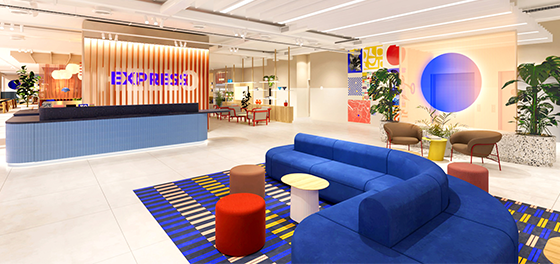
This article takes a deep dive into the growing importance of empathy in healthcare and how a more human-centered approach can transform the patient experience. It discusses valuable lessons the industry can learn from the world of hospitality to create deeper, more meaningful connections with patients.
What Makes Healthcare Successful? The Role of Empathetic Care
When the series first appeared on television screens in 2004, House M.D. immediately captivated viewers with its charismatic and controversial protagonist. Dr. Gregory House was an extraordinary physician who was as brilliant as he was cynical and provocative. His diagnostic genius and medical insights were based on a simple but compelling premise, namely that the patient is, first and foremost, a riddle to be solved.
Each episode, therefore, followed the same narrative pattern: an initial diagnosis fails, complications arise and then Dr. House intervenes with a brilliant intuition to save the day. Patients’ emotions were considered a distraction in this universe, and their requests or concerns were systematically ignored.
More than two decades later, the show’s conception of medicine—where listening, emotional support, and human connection with patients were secondary—seems almost crass or at least vastly antiquated. Scientific studies have disproved Dr. House’s heartless approach, showing that empathy is fundamental to successful healthcare.
For example, Hojat et al. (2011) demonstrated that empathetic physicians achieve better patient outcomes. Their study of diabetics found that patients who felt listened to and understood suffered from fewer complications and were more likely to follow through with their treatment. In other words, Dr. House’s clinical approach, which is laughably short on dialogue, is not the best route towards patient satisfaction or better healthcare outcomes.
Patient Satisfaction: Evolving Expectations in Healthcare
Throughout history, patients have often been seen as mere recipients of care. The physician made decisions about diagnosis and treatment, and the patient duly followed instructions. Thanks to the Internet, health forums and medical review platforms, patients today have easy access to droves of information. They want to understand medical decisions, ask questions and, most importantly, actively engage in the care process. Caregivers need to adapt to this sea change. They must listen and communicate transparently with patients to increase their satisfaction and commitment to their treatment plan.
Patients want to experience a more human-centric approach to healthcare. This doesn’t necessarily mean that care systems have to be completely overhauled. For example, Dr. Kate Granger’s Hello, my name is”
initiative in the United Kingdom encourages caregivers to introduce themselves by their first name before each interaction. Although it is simple, the novel and compassionate approach makes patients feel less anonymous and enhances trust in medical staff. Meeting patient expectations does not always require costly investments; it does, however, require changing organizational culture and mindsets.
Enhancing the Patient Experience
Personalization is another lever that increases patient satisfaction. Some hospitals now allow patients to choose their meals, adjust the temperature of their room or access entertainment programs tailored to their preferences. These innovations improve comfort and create an environment where patients feel respected and listened to. As a 2021 study by healthcare firm Press Ganey showed, hospitals that offer personalized services achieve higher satisfaction than those that take a standardized approach. This result should surprise no one.
Finally, the environment in which care is delivered also plays a critical role in patient satisfaction. Often perceived as cold and impersonal, traditional hospitals must reinvent themselves to offer more welcoming spaces. Indeed, like hotels, hospitals can use their existing infrastructure to improve patient satisfaction. As early as 2008, Ulrich et al. (2008) highlighted how elements such as natural light, views of nature or reduced noise pollution can minimize patient stress and promote better recovery.
Integrating the patient experience into hospitals’ priorities is often met with resistance. Some professionals fear that focusing on relational and environmental aspects will distract attention from clinical outcomes, and stretch scarce resources even thinner. So can care facilities overcome these obstacles? First, hospitals must demonstrate that improving the patient experience is not at odds with medical quality but is an essential complement… and boosts their bottom lines. It is not only an ethical imperative, it’s also a profitable investment.
Moreover, a positive experience reduces the risk of litigation, decreases readmissions, and goes a long way to improving employee engagement (a fact that is often overlooked). The Cleveland Clinic has shown that focusing on the patient experience has reduced costs while increasing revenue through improved patient retention. Satisfied patients are more likely to recommend a facility, return for future care, and post positive reviews online.
Are these questions important to me as a physician? They should be, and investing in specialized training and regular analysis of patient feedback can help hospitals convince their staff of their usefulness.
Hospitals Inspired by the Hotel Industry to Enhance Patient Experience
Enhancing guest satisfaction is one of the most critical goals in the hospitality industry. In luxury hotels, for example, we don’t just respond to customer expectations: we anticipate them and personalize every interaction. This personalization is often based on surveys sent to customers before their stay, so services are tailored to their needs such as the type of pillow, preferred meals or favorite activities. Hospitals could easily use their existing pre-admission surveys to collect more than just clinical information (e.g., cultural preferences, dietary restrictions or other specific needs) to provide customized care and make patients feel more like guests.
You never get a second chance to make a first impression. This adage is true for the check-in process at a hotel and admission protocols at hospitals. Following the example of Four Seasons hotels, where guests are greeted by name and informed of services upon arrival, some hospitals, such as Cedars-Sinai, have redesigned their admission process to be warmer and more fluid.
The Los Angeles hospital assigns each patient to a dedicated coordinator who explains administrative procedures and the course of care while answering any questions patients might have. This kind of attention reduces stress and builds trust from the very first interaction. Many other hospitals have developed concierge services modeled after those used in the hotel industry to provide families and patients with practical information, relaxation or administrative assistance. Hospitals are copying hotels by centralizing these services to simplify the patient journey.
Finally, staff training is also a key issue. In the hotel industry, employees go through intensive programs on the art of listening and courtesy. Employees at the Ritz-Carlton group, for example, strive to solve customers’ problems ‘as if it were their job’, which is a commitment that is repeatedly underscored during the employee onboarding and assessment processes.
This philosophy has informed hospital initiatives, such as the Cleveland Clinic or the CHUV hospital, where caregivers receive training in emotional intelligence and communication skills. This awareness promotes a more human-centered approach and helps improve the overall patient journey.
Out with Dr. House and In With a Holistic Patient Experience
As patients expect more empathetic care, medical facilities must get ahead of the curve. Where Dr. House embodied a dehumanized vision of medicine, modern hospitals seek to merge technical expertise with the principles of hospitality. In short, their mindset must be far less clinical (let alone cynical) and more sensitive to all aspects of the patient experience.
By prioritizing empathy, hospitals can go a long way in improving clinical outcomes while enhancing their reputation in an increasingly competitive landscape. This shift is not just about addressing medical needs, but also about embracing the patient as a whole person. It’s a call to reimagine healthcare as a service centered on empathy and connection, drawing from the very essence of hospitality to create healing, inspiring environments.









